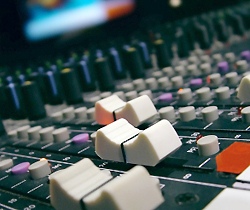
Have you “rung out” the monitors for feedback? Start the mix with a clean slate. Many times rehearsals will start with the same mix that ended with last week’s service. The problem is there were three other services and other musicians on stage and you are just compounding problems.
Let’s start out with a clean slate by “zeroing” out the mixer. Now let’s hold that thought for a moment. I would NEVER recommend that you start this new mix 15 minutes before service time. We need a comprehensive soundcheck before and during rehearsal.
Having said that, coordinate this undertaking with your music director/worship leader. They will appreciate your concern for their mix.
Now let’s get back to our clean slate. “Zero Out” the mixer by turning off all of the aux sends. The quickest and most efficient way I have found to do a sound check is to run a chorus of the most upbeat song in the set list. Remember to take into account the volume all of the acoustic instruments (piano, drums) will make, not to mention the electric guitar amps, before you turn up any monitor.
I have my band play a chorus with no monitors just to hear what kind of level we are generating before we add monitors. Then I start with the rhythm section, beginning with the drummer, going through the levels of each of the instruments: bass, electric, keys, lead vocal, until the drummer is happy with his mix.
If I’m the worship leader, I coordinate with the sound person on my mic. If I am the soundman, I will use a talkback mic and communicate with the musician on every change I am making. If I have the luxury of a monitor engineer, I am on stage with the musician using hand signals with the monitor engineer.
Listen from the performers’ perspective. I always recommend sound people walk out on stage, especially if they are mixing wedges, to hear exactly what the musician is hearing.
Be sure and listen to each monitor. Different brand monitors are going to sound different. Cuing the mix up in a headphone is not an accurate representation, unless you are mixing wireless personal monitors.
This approach has always been successful for me in the worship setting. It lets the musician know the sound tech cares about what their mix sounds like. It’s very frustrating for a musician onstage to need something in their mix, or have a problem, and the soundman behind the board never moves from behind it.
I move then to the bass player, then electric, then keys. Usually during the rehearsal musicians will asks for changes and adjustments will be made. Before we stop I always like to run the upbeat opener once again, just so there are no surprises when it is down beat time.
